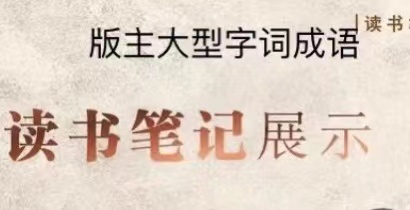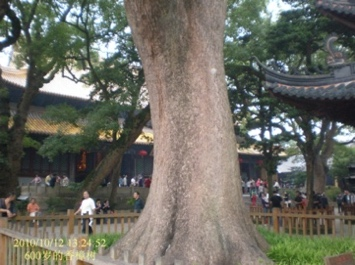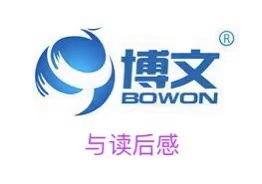传统英语语法分成两大块,第一大块是词法,把单词分成十大词类(word classes或parts of speech);第二块是句法,把句子分成简单句,并列句和复合句,然后分别阐述。《全新大学英语语法》考虑到读者们已经有了基础语法知识,决定从英语基本句型,即句子结构开始,首先对构成基本句型的动词以及句子成分进行命名分类,再导出主要词类、短语和分句所担当的各类成分。
1.1七大基本句型(seven basic sentence patterns)
初学英语者觉得英语句型千变万化,难以把握记忆。语法研究者们剔除句子的外围或附加成分,对英语句子必须成分的基本骨架进行分类。从构成句子结构考虑夸克语法系统认为共有三类动词,它们构成了七大基本句型:
系动词(copular verb或linking verb)构成两种基本句型:
Your dinner is ready. 主语+系动词+主语补语(subject + copular verb + subject complement),汉语简称为“主动主补”结构,英语缩写成SVC。
Your office is in the next building. 主语+系动词+状语(subject + copular verb + adverbial),汉语简称为“主动主状”结构,英语缩写成SVA。
不及物动词(intransitive verb:vi.)构成一种基本句型:
The sun is rising. 主语+不及物动词(subject + intransitive verb),汉语只好叫作“主语(不及物)动词”结构,英语缩写成SV。不叫作“主动结构”是为了避免与主动语态和被动语态的名称混淆
及物动词(transitive verb:vt.)构成四种基本句型:
The lecture bored me. 主语+动词+宾语(subject + transitive verb + object),汉语简称为“主动宾”结构,英语缩写成SVO。
I sent my parents an anniversary card. 主语+动词+间接宾语+直接宾语(subject + transitive verb + indirect object + direct object),汉语简称为“主动双宾”结构,英语缩写成SVOO。
Most students have found her helpful. 主语+动词+宾语+宾语补足语(subject + transitive verb + object + object complement)汉语简称为“主动宾补”结构,英语缩写成SVOC。
You can put the dish on the table. 主语+动词+宾语+状语(subject + transitive verb + object + adverbial)汉语简称为“主动宾状”结构,英语缩写成SVOA。
下边把三种类型的动词构成的七大基本句型通过表格形式进行归纳:
动词类型(VP: verbal pattern) | 七大基本句型 | 英语缩写 | |
系动词(copular) | 主动主补结构 | SVC | |
主动主状结构 | SVA | ||
不及物动词(intransitive) | 主语(不及物)动词结构 | SV | |
及 物 动 词 | 单宾及物动词(monotransitive) | 主动宾结构 | SVO |
双宾及物动词(ditransitive) | 主动双宾结构 | SVOO | |
复合宾语动词(complex transitive) | 主动宾补结构 | SVOC | |
主动宾状结构 | SVOA | ||
三种动词类型以及它们能够构成的七种基本句型是由其所表达的不同的意思而决定的,譬如动词get就可以构成如下众多句型:
He's getting angry. (SVC)get 是系动词(copular)
He'll get a surprise. (SVO)get 是单宾动词(monotransitive)
He got her a splendid present. (SVOO)get 是双宾动词(ditransitive)
He got his shoes and socks wet. (SVOC)get 是复合宾语动词(complex transitive)
He got himself into trouble. (SVOA) get 是复合宾语动词(complex transitive)
再看动词turn:
The big wheel was turning. (SV)
I turned the key in the door. (SVO)
The lady turned pale. (SVC)
The cold weather turned the water to ice. (SVOA)
The sun turned her skin (a) golden brown(金褐色). (SVOC)
1.2 五大必须成分(five obligatory members)
根据上面罗列的七种基本句型,我们可以结论,这些句型中包含有五种基本的句子成分:
1.主语(subject):这七种句型都有的成分。主语是句子所要表述的主体,SVC结构表示主语的特性身份等;SVA结构表示主语的时间地点等;SV结构表述主语自身的行为,不涉及其它人或事物;SVOO,SVOC和SVOA结构表示主语的行为或动作影响到其它人或事物。充当主语一定是名词(noun)或名词的替代词(pronoun),我们也可以倒过来说,只要充当主语成分一定是名词性的,无论它是一个单词(word),一个短语(phrase),或一个分句(clause)。
2.动词(verb):任何句型都离不开动词,句子的基本结构是由动词意思决定的。
3.宾语(object):及物动词的对象,object就是“对象”和“目标”的意思。宾语如同主语一样由名词(noun)或代词(pronoun)充当,也可以倒过来说,充当宾语的一定是名词性的,无论它是一个单词(word),一个短语(phrase)或一个分句(clause)。
4.补语(complement):基本句子结构中的补语有两种情形,一是与主语相连的(subject related),叫作主补;另一种与宾语相连的(object related)叫作宾补。充当主补和宾补的词类很多,在“5.2系动词构成的主动主补结构”中将有详细叙述。
5.状语(adverbial):传统英语语法模糊地认为状语是句子的附加成分,夸克语法系统认为SVA和SVOA结构中的状语是句子的必须成分(obligatory),这是充分说理的,无论是Your office is in the next building.还是You can put the dish on the table.里边的状语都是必不可少的。这两种必须成分的状语,一种与主语相关(subject related),叫作主状;另一种与宾语相连的(object related)叫作宾状,它们是一种特殊的属于句子基本结构的状语。本章最后的[注]作了比较详细的分析。
1.3 两大附加(或外围)成分(two peripheral members)
两大附加成分指为名词服务的定语(attribute)和为动词、形容词、副词和句子服务的状语(adverbial)。之所以将它们称为附加成分,是因为删除它们不会影响句子的基本结构和基本含义。
为名词服务的定语可以是单词、短语和句子,可以是前置的,也可以是后置的:
He has a beautiful garden. 他有一个(漂亮的)花园。(SVO结构,beautiful是定语,前置修饰宾语名词garden)
The meeting tomorrow is very important. (明天的)会议十分重要。(SVC结构,tomorrow是定语,后置修饰主语名词meeting)
Most teachers have found the girl with red hair helpful. 大多数老师发现那个(红头发)姑娘乐于助人。(SVOC结构,介词短语with red hair是定语,后置修饰宾语名词girl)
The big wheel which was almost broken was still turning. 那个几乎要散架的大轮子还在旋转。(SV结构,句子which was almost broken是主语wheel的后置定语)
由于为名词服务的主要是形容词,因此可以说无论单词、短语或句子充当定语为名词服务的都是形容词性的(adjectival)。
七大句型中的SVA和SVOA中的状语分别是主语倾向和宾语倾向,它们是为名词服务的,是句子的必须成分。大量的作为附加成分的状语功能庞杂,可以服务于谓语动词、形容词、副词或整个句子。状语同样可以是单词、短语或句子:
Hurriedly, he banged the door. 他急忙砰地关上了门。(SVO结构,副词hurriedly放到句外,服务于动词bang)
We didn't speak the whole day. 整整一天我们没有说话。(SV结构,短语the whole day服务于动词,表示延续的时间长度)
The doctors pronounced her condition utterly hopeless. 医生宣布她的病情毫无回复的希望。(SVOC结构,副词utterly修饰作宾补的形容词hopeless)
They are smoking very heavily. 他们抽烟很是厉害。(SV结构,副词very修饰副词heavily,very heavily修饰动词)
He made a fortune by means of bribery. 他靠贿赂发财的。(SVO结构,介词短语by means of bribery为谓语服务,是表示手段的状语)
He painted where he happened to be. 他走到那里画到那里。(SV结构,句子where he happened to be相当于一个地点副词)
状语包罗万象,凡是无法归属的成分均归状语。作状语的词类主要是副词,因此只要作状语,无论是单词、短语还是句子都认为是副词性的(adverbial)。
把英语中七大基本句型、五大基本句子成分和两大附加成分掌握后就可以使我们起步进入夸克英语语法体系。首先要明确的是,无论是单词、短语还是句子,其语法性质是由其在句子中担当的成分而决定的,譬如充当主语和宾语的一定是名词性的,充当谓语的一定是动词,充当定语是形容词性的,充当状语则是副词性的。笔者一次在公交车上听到几个年轻女老师的对话(可能是小学语文老师),似乎她们正在学习汉语语法。甲问:什么是名词?什么是动词?乙答:动词就是那些表示行为动作的词,譬如游泳,走动,笑,哭等;名词就是人或事物的名称,譬如汽车,牛,羊,动物等。本人听了后只好暗笑,觉得这两个女老师根本没有入门。无论英语还是汉语,很多名词可以充当动词的,英语中譬如head: She headed the car towards them.(她驾车向他们驶去。)He headed a corner kick into the net.(他用头顶入了一个角球。)古汉语和现代汉语中,词性的转化也是俯拾皆是。譬如“这个人很牛。”“牛”由名词转化成形容词;“不行,我得跟他去理论理论。”“理论”由名词转化成动词;“报仇雪恨”名词“雪”转化成动词“洗去,除去”;“有事您就言语一声”中的“言语”也变成动词等等不一而足。
其次要知道七大基本句型是我们分析复杂长句的依据。复杂长句主要是由于短语和句子充当句子成分引起的。有了基本句型这个武器,我们就有了火眼金睛,剔除附加成分,识破基本结构,准确把握句子的含义了。
1.4表示存在的there be句型(existential “there be” pattern)
There be…句型是一个十分常用的简易句型,但没有包括在七大基本句型中,这是由它的特殊性决定的。句型中的动词be不属于上面讲过的三大词类,there不是主语,而是一个引导词(introductory there),主语是be后面的名词或名词短语,be的单复数由后面的主语决定,前面还可以添加情态动词。另外be还可以有时态的变化:
There is (was) a table in the corner. 角落有一张桌子。
There are (were) a lot of wild animals on the grassland. 草原上有很多野生动物。
There could be no bus after the midnight. 半夜后可能就没有公交车了。
There has been already a team in the playground. 操场上已经有了一支赛队。
There be结构的句型和七大基本句型在一定条件下是可以转换的,七种基本句型的主语必须是不定名词或代词,谓语中必须有be的形式(譬如系动词be,进行时,被动语态等)
Type SVC: Something must be wrong. There must be something wrong. 一定出错了。
Type SVA: Was anyone in the vicinity? Was there anyone in the vicinity? 附近有人吗?
Type SV: No one was waiting. There was no one waiting. 没有人在等待。
A dozen hungry people were standing in the rain.
There were a dozen hungry people standing in the rain. 十来个挨饿的人正站在雨中。
Type SVO: Plenty of people are getting promotion.
There are plenty of people getting promotion. 很多人得到了提拔。
Someone was knocked down.
There was someone knocked down. 有人被撞倒了。
Type SVOC: Two bulldozers(推土机)have been knocking the place flat.
There have been two bulldozers knocking the place flat.
两台推土机把那地方整理平整了。
Type SVOA: A girl is putting the kettle on. There is a girl putting the kettle on.
一个姑娘把壶放上去了。
Type SVOO: Something is causing my friend distress.
There is something causing my friend distress. 有些事情把我的朋友搅得很是痛苦。
有关there be句型的延伸,there be句型中的其它可以使用的动词,将在“5.19 there be结构句型(there be pattern)”做详细阐述。
[注]:
传统语法把状语一律不看作是句子的必须成分,因此将SVA结构归属到SVC,把SVOA归属到SVOC,这就是传统的五大基本句型。但是在Your office is in the next building.这个句子中in the next building就是一个表示地点的状语,只不过这个状语既不是说明动词的,也不是说明全句的,而是倾向主语的,我们只能使用疑问副词where进行提问:Where is your office? 同样在You can put the dish on the table. 这个on the table表示了宾语的地址,其结果就是The dish is on the table. 对on the table的提问也要使用where:Where can I put the dish? “on the table”是句子的必须成分,属于句子的基本结构,因为You can put the dish是不能表述一个完整的意思的,因此夸克语法的七种基本句型的分类更加拥有其合理性。
Exercises
Ⅰ. Classify the following sentences according to the seven basic sentence patterns, namely SVC, SVA, SV, SVOO, SVO, SVOC, and SVOA and translate them into Chinese(将下列句子按照七大基本句型归类,分别为SVC, SVA, SV, SVOO, SVO, SVOC, 和 SVOA结构,并将句子译成汉语)
1. Martha was a good student.
2. Martha was honest.
3. Martha was upstairs.
4. I believe Martha an honest student.
5. I arranged Martha upstairs.
6. John remains a fisherman.
7. He remained firm in the face of the enemy.
8. How many weeks will you remain here?
9. Only half the audience remained at the end of the concert.
10. Both men found it difficult to put ideas into words.
11. I have found the lost book.
12. Please find Mary her bag.
13. I found him behind the big tree.
14. At the meeting I’ll insert a few words.
15. The doctor inserted the device under the patient's skin.
Ⅱ. Judge which adverbials are obligatory (O) and which are peripheral (P) in the following sentences. (判断下列句子中的斜体状语哪些是必须成分,那些是附加成分)
1. The birthday party is in the next room.
2. We held the birthday party in the next room.
3. We arranged the birthday party in the next room.
4. In the next room, there is a birthday party.
5. Our hostess led us to the next room.
6. They are at risk.
7. I don't consider him at risk.
8. They undertook the adventure at their own risk.
9. The war will put innocent lives at risk.
10. The firefighter went back into the burning building to save the dog—at considerable risk to his own life.









